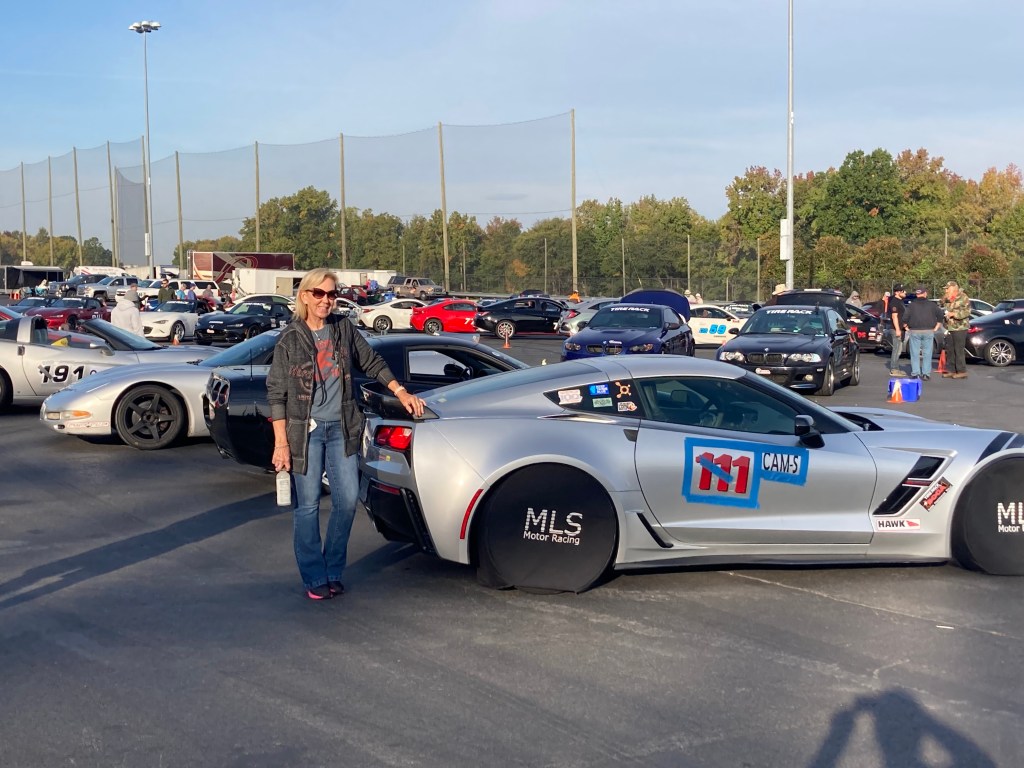Nats was a wake-up call. My driving discipline broke down.

By discipline I mean the ability to calmly and constantly test for and drive at the limit, given whatever the particular conditions are, even if the limit is getting lower as the run proceeds, and not succumb to the desire to sacrifice position for speed. That means never overdrive and aways let correct position produce more speed.
In the pressure of the moment at Nats I didn’t do that.
So, I was really looking forward to a 2-day event in Columbus, MS followed the next week by the Charlotte Tour, thinking of both as opportunities to practice good driving discipline. This is my plan and goal for the foreseeable future.
The surface at Columbus Air Force Base is clean concrete and the layout is very similar to Peru, if you happen to know that site. On Day 1 of the two day event I had last year’s A-Street national champ as co-driver in my car. We rode with each other the first two of four runs in the morning and the first two of four more in the afternoon. It had been a couple years since I’d ridden with him and, frankly, I was a little shocked at how fast he was in my car. Another wake-up call. I really need to up my game.
Overall, I was reasonably satisfied with how I drove at Columbus, successfully working on being fast and driving at the limit but disciplined and controlled. I was looking forward to Charlotte. My co-driver mentioned that, while my car was very fast (he took top PAX in it) he thought it was a little too loose.
Once at Charlotte and reunited with my regular co-driver, Tom, I asked him if he also thought the car was too loose. He said, a little exasperated, “That’s what I’ve been telling you all year!”
I finally got the message.
I said, “Okay, let’s add some toe-in to the rear.”
“Did you bring toe-plates?” he asked. (Tom had flown in to Charlotte.)
“Don’t need them,” I answered.
I knew that the toe setting was absolutely zero both front and rear on the car having been intentionally set this way after it was repaired earlier in the Spring. (These are the stock toe settings… I’d wanted to try it, though I always used a little rear toe-in on my C5 and sometimes front toe-out) I proceeded to jack up the rear end of the car and put in two flats of toe-in on each wheel. I know from experience that this is enough to make a noticeable change.
The car was clearly easier to drive at Charlotte compared to Columbus. It was more stable at the limit. Once home I measured the new rear toe at 3/32nds of an inch total. My toe plates are 22 inches in between measuring points. This turns out to be a total toe angle of 0.24 degrees. (I use Rob Robinette’s convenient on-line calculator for converting toe inches to degrees.)

While working course on Day 2 at Charlotte I watched the faster ES Miatas not brake at a certain point like the slower cars and instead carry more speed into the section followed by aggressively sliding the car through the next turn, letting the slide bleed off the speed as necessary to make the next feature. The net result was an increase in average speed in that section, but you had to really trust that you could control the slide. I attempted to copy. I’ve always considered that dynamically a Corvette is really just a bigger, heavier Miata except with more power. It worked great and the slide was stable thanks to the revised rear toe setting. I’m not sure it would have been possible otherwise.

I was satisfied with my driving both days and took 2nd in a class of six.
While my car is not set up for CAM-S, neither were two of the other three cars. The only well-set up car per the class rules was the winner by a sizeable margin. I got lucky and snagged the only additional trophy spot.